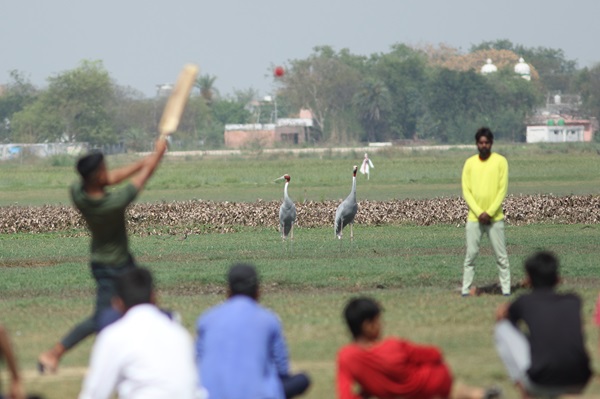.png)

Dhananjay Sinha, CEO and Co-Head of Institutional Equities at Systematix Group, has over 25 years of experience in macroeconomics, strategy, and equity research. A prolific writer, Dhananjay is known for his data-driven views on markets, sectors, and cycles.
March 12, 2025 at 1:26 PM IST
India’s farm sector is booming on paper, yet rural prosperity remains elusive. While gross value added has surged, incomes have barely budged, exposing a deep structural fault in India’s economic fabric.
Despite strong production figures, the value of output and credit growth have slowed over the past decade, widening the gap between economic statistics and lived reality. As ruralisation accelerates, the countryside is trapped in low productivity and stagnating wages, raising urgent questions about policy direction.
If left unaddressed, this growing imbalance threatens to deepen economic distress across rural India, making immediate intervention imperative.
Between 2015-16 and 2023-24, real farm sector growth averaged 4.9% annually and is expected to expand by 4.6% in 2024-25. This performance has outpaced broader economic growth, highlighting the resilience of Indian agriculture.
Yet, real wages for agricultural workers have barely increased, growing at a negligible 0.8% annually, underscoring the widening rural income crisis.
The divide between GVA and household earnings is particularly stark when examining factor rewards. Over the past five years, the share of labour and capital income has remained largely static at 56.5% and 43.5%, respectively.
However, returns per unit of labour and capital have declined by 0.4% and 0.3%, respectively, annually. With the rural workforce expanding faster than job creation in urban centres, employment pressures are mounting.
A recent study by the Economic Advisory Council to the Prime Minister found that domestic migration has fallen by 12% since 2011.
Fewer people are leaving rural areas, reversing a decades-long trend of urbanisation. Consequently, the share of the workforce dependent on agriculture has climbed from 42.5% in 2018-19 to 46.1% in 2023-24.
This shift has dampened remittance flows to rural households while accelerating land fragmentation and reducing farm productivity. The net result has been an oversupply of rural labour and downward pressure on real wages.
Earnings Under Strain
Data from NABARD’s Financial Inclusion Survey shows that rural household incomes primarily stem from cultivation, livestock rearing, wage labour, and government or private services.
Agricultural households earned an average of ₹13,661 per month in 2022, growing at an annual rate of 8.9% over five years. While this is higher than non-agricultural rural households, which earned ₹11,438 per month (9.5% growth), the broader trend is troubling.
The share of agricultural households in rural income has risen from 48% to 57%, suggesting declining income contributions from non-farm sectors.
Female labour force participation has increased, but earnings have suffered. Real wages for women in agriculture have contracted in recent years, reinforcing the broader trend of income stagnation.
More agricultural households are turning to non-core activities—primarily low-paying rural construction, government schemes such as MGNREGA, and services in the private sector—to supplement their incomes.
Nominal wages from traditional farm labour have shrunk by 5.8% annually between 2017 and 2022, while earnings from government and private services have expanded at 16.9% per year.
A similar story unfolds among non-farm rural households. Their dependence on labour income has dropped sharply from 54% to 26% over five years, while their average monthly income stood at ₹11,438.
Earnings from private and public sector jobs have increased at a robust 23% annual rate. These shifts point to a structural transformation in rural employment patterns, driven not by productivity gains but by necessity.
Temporary government support has masked deeper vulnerabilities, but unless structural reforms unlock new avenues for rural employment and income generation, the crisis will only intensify.
Credit and Consumption
Bank lending patterns highlight a divergence between rural wages and borrowing trends. Over the past five years, rural credit has expanded at an annual pace of 11.5%, with personal loans driving much of this growth.
Agricultural lending has risen by 11% annually, while personal loans have grown at 16%. Meanwhile, credit to transport operators has increased by 11.8%, construction by 2%, trade by 7.6%, and services by 9.1%.
Industry lags further behind at 6.3%.
Historically, rural credit and wage growth have been closely correlated. Between 2009-10 and 2013-14, agricultural GVA grew at 3.5% annually, yet rural wages expanded at 6% per year.
During this period, credit to the rural sector increased by 13% annually, supporting higher incomes. The past five years, however, have told a different story.
Even as GVA climbs at 4.7% annually, real rural wages have shrunk by 0.6%, illustrating the stark disconnect between output growth and earnings. Loan growth has slowed to 11.5%, primarily driven by consumption rather than productive investments.
The share of rural bank credit flowing into gross fixed capital formation has steadily declined. In 2002-03, nearly 96% of agricultural loans were directed toward capital investment.
By 2022-23, this had fallen to 37%, reflecting a shift away from productivity-enhancing lending. Instead, rural borrowing is increasingly financing consumption.
Household ownership of televisions, two-wheelers, and smartphones has surged, with auto loans growing at an annual rate of 14.6% and personal loans—particularly those secured against property—rising by 21.8%.
Food Inflation Puzzle
Notwithstanding the rise in leveraged consumption in recent years, the national levels Household Consumption Expenditure survey shows a sharp slowdown in real consumption in rural and urban areas to 3.3% and 2.8% respectively. However, the food consumption patterns present another anomaly. It suggests that per capita spending on food, particularly cereals, has declined in real terms.
Adjusted for free food distribution, nominal monthly per capita expenditure on cereals in rural areas grew at just 2.5% annually between 2011-12 and 2023-24, while inflation averaged 5.6%.
The real decline in spending contradicts national income data, which shows that personal final consumption expenditure on cereals and bread grew at 4.4% annually—higher than the agricultural production growth of 2.1%.
Rural economic stress is no longer just a warning sign—it is a crisis in motion. Rising disguised unemployment, falling real wages, and decelerating nominal growth indicate structural imbalances.
With ruralisation accelerating and economic cracks widening, policymakers must take bold steps to generate sustainable rural employment, redirect credit to productive enterprises, and prevent the deepening wage stagnation from becoming a drag on broader economic growth.




